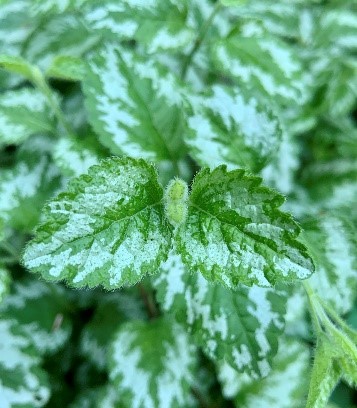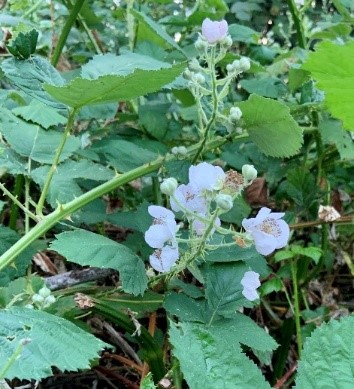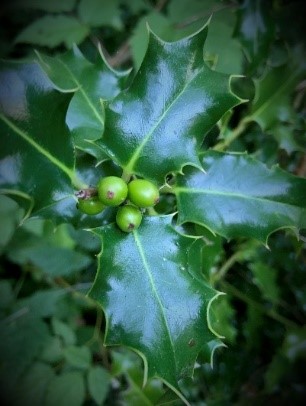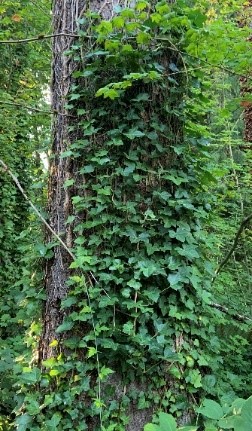Remember this is an urban forest – an unnatural, natural area. As such, it does offer some unique challenges. One of the most challenging aspects of urban natural areas is control of invasive plants. The forest reserve, unfortunately, is home to several invasives including yellow archangel (Lamiastrum galeobdolon), English ivy (Hedera helix), and Himalayan blackberry (Rubus armeniacus). Often times non-native plants are introduced to a natural area through humans; by dumping yard waste in the forest, neighboring landscapes creeping into the forest or seed being carried into the forest on people’s clothing or shoes. Birds have also been known to introduce non-natives, particularly the English holly (Ilex aquifolium) by eating berries at one site and eliminating the seeds in a different site. Occasionally, English holly has been found in the forest reserve and is considered a weed of concern in King County because of its ability to impact and degrade native plant and animal habitat.
The other challenge is the limited size of the forest. In nature, disturbances (fire, disease, windfall, earthquakes, etc.) are natural events that are dealt with by the landscape – for example in a million-acre forest death and birth happens on a scale that is normal and natural. Our forest is only 26 acres, so sometimes death and birth need to be managed by man. For example, the trees within the forest are overcrowded and may need to be thinned. Also, a natural-occurring fungal disease, called root rot, is killing trees within the forest. These dying trees may need to be removed. At this time, the LWAF and the City are continuing to monitor the forest and may have to intervene at some time in the future to insure the health and survival of the forest.

Yellow Archangel 
Himalayan Blackberry 
English Holly 
English Ivy 
English Ivy climbing a tree
